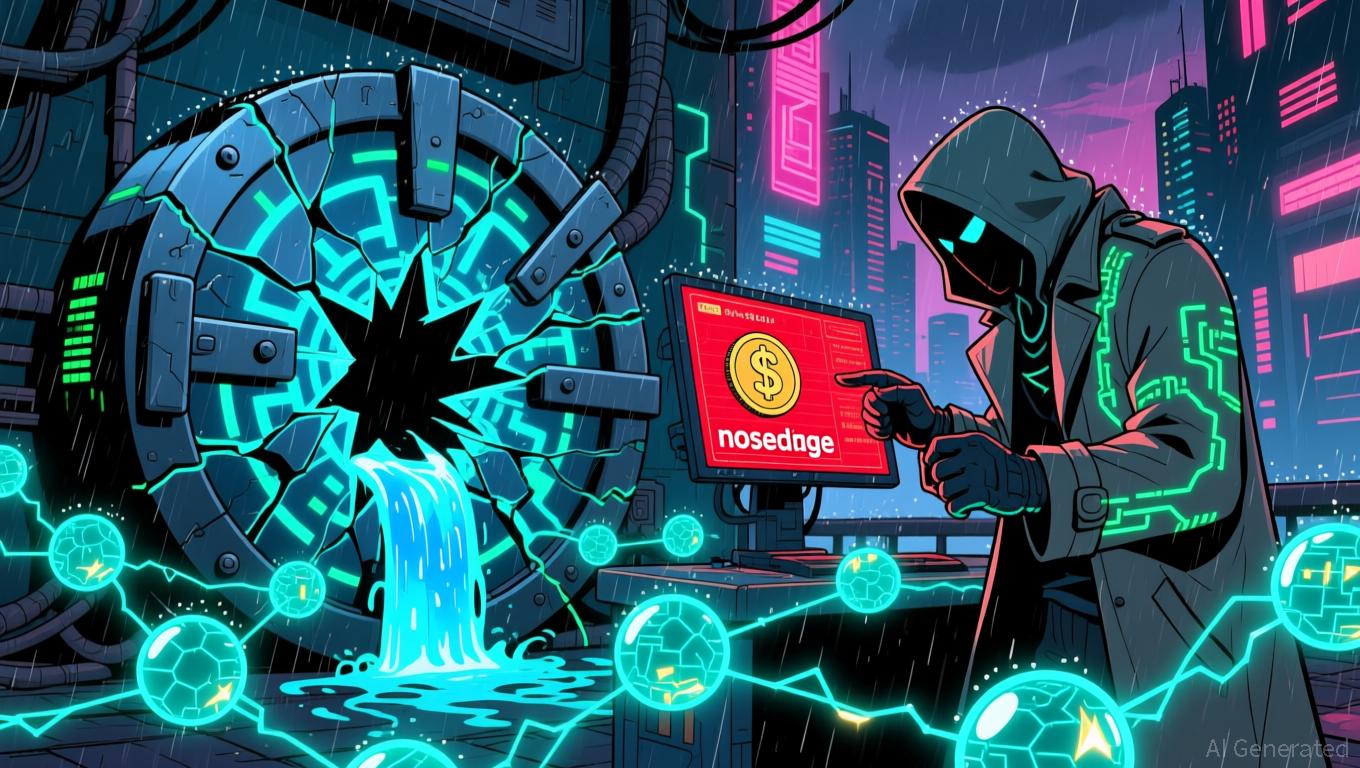Blockchain’s Defense Dilemma: Tackling Present-Day Attacks and the Emerging Quantum Challenge
- Port3 Network suffered a $14.45M loss after a hacker exploited a BridgeIn protocol flaw to mint and dump 162.75M PORT3 tokens, triggering an 82% price crash. - The attacker burned 837.25M tokens post-sale, while Port3 halted liquidity and deposits to contain the damage, though the token remains at $0.0086. - QANplatform's quantum-resistant QAN XLINK protocol passed a Hacken audit, addressing long-term risks as 65% of Ethereum addresses face quantum vulnerability. - The incident highlights DeFi's dual thr
Port3 Network, a decentralized AI data layer initiative, has reported a major security incident that led to an 82% drop in the value of its PORT3 token. On November 23, the project revealed that a hacker exploited a flaw in the BridgeIn protocol, allowing them to create an extra 1 billion PORT3 tokens. These tokens were quickly sold off in liquidity pools before being destroyed. As a result, the token's price crashed from $0.037 to $0.0066 in just a few hours, slashing its market cap from $18.5 million to $4.05 million
Blockchain analysis traced the attacker to wallet address 0xb13a, who generated 1 billion PORT3 tokens and sold 162.75 million of them for 199.56

This exploit in the BridgeIn protocol highlights the persistent dangers within decentralized finance (DeFi), where vulnerabilities in smart contracts can be swiftly exploited. The Port3 team clarified that user assets were not affected, but stressed the necessity for more rigorous security reviews. "This event is a clear warning about the critical role of proactive security in DeFi," a spokesperson mentioned in an internal message.
At the same time, the wider crypto sector remains alert to the risks posed by quantum computing, which could undermine current cryptographic defenses. In a related development, QANplatform—a blockchain project prioritizing quantum-resistant technology—announced that its QAN XLINK protocol successfully completed a thorough audit by cybersecurity firm Hacken. This protocol, which uses lattice-based post-quantum cryptography (PQC) and works with Ethereum-compatible wallets,
Hacken's review confirmed that QAN XLINK can defend against quantum risks by enabling quantum-secure signatures, all without forcing users to switch from their current setups. The audit also pointed out that about 25% of Bitcoin and more than 65% of
The Port3 breach and QANplatform’s advancements in quantum security illustrate the dual challenges confronting blockchain: immediate threats from exploits and the looming issue of technological obsolescence. As Port3’s team works to recover, the incident highlights the pressing need for strong security measures in the industry. For investors, it also serves as a reminder of the high volatility in DeFi tokens, where a single exploit can wipe out millions in value in a matter of hours.
Disclaimer: The content of this article solely reflects the author's opinion and does not represent the platform in any capacity. This article is not intended to serve as a reference for making investment decisions.
You may also like
Trump and Mamdani’s Bet on Affordability: Uniting Opposing Ideologies
- Trump and Mamdani's Nov. 21 meeting highlights clashing ideologies on affordability and governance, with New York's $1.286T economy at stake. - Both leaders share focus on cost-of-living crises but differ sharply on solutions, with Trump threatening federal funding cuts and Mamdani advocating rent freezes. - Experts see the dialogue as critical for redefining strained city-federal relations, emphasizing urban centers' role as economic engines. - Mamdani's corporate tax proposals clash with Trump's deregu

Bitcoin News Update: Navigating Crypto’s Balancing Act to Steer Clear of 2018’s Downturn as Global Economic Conditions Evolve
- Crypto markets avoid 2018-style collapse as macro-driven cycles and reduced speculation prolong volatility, per Lyn Alden. - Fed policy uncertainty and leveraged ETF launches highlight risks and innovations amid $2.2B crypto outflows and $914M liquidations. - MSTR's BTC gains and Gunden's $1.3B sell-off reflect divergent investor strategies, while Munari's Solana project targets long-term adoption. - Analysts split between 65-70% Bitcoin retracement forecasts and prolonged cycles driven by institutional

Bitcoin Updates: U.S. Suggests Using Bitcoin for Tax Payments to Dominate Worldwide Digital Economy
- U.S. Rep. Warren Davidson introduced the "Bitcoin for America Act," allowing Americans to pay federal taxes in Bitcoin and creating a Strategic Bitcoin Reserve. - The bill cites Bitcoin's fixed supply and long-term appreciation potential, aligning with corporate strategies like Michael Saylor's $48.37B BTC holdings. - It aims to counter global competition from China/Russia while balancing risks like BTC's 30% price drop from its August peak. - Proponents argue voluntary BTC tax contributions could build

XRP News Today: XRP Faces Uncertainty: Bearish Trends Clash with Optimism from ETF Prospects
- XRP faces critical juncture at $1.96 as bearish technical patterns clash with institutional optimism from new ETFs. - Descending triangle breakdown and RSI divergence signal potential 25% drop to $1.55, contradicting ChartNerd's reversal prediction. - Bitwise XRP ETF's $25.7M debut volume injects liquidity but risks accelerating forced selling from 41.5% of supply at a loss. - Analysts debate ETF-driven bullish potential vs. structural risks, with $2.20 support zone and $1.25 price floor as key battlegro
